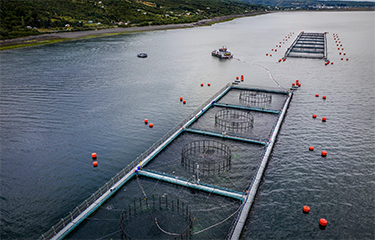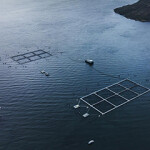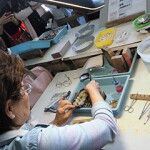After navigating the pandemic and algae blooms, Salmones Camanchaca focuses on coho

Salmones Camanchaca plans to double its coho salmon production now that it has recovered from the impacts of the Covid-19 pandemic and the algae bloom that walloped the company in 2021.
“We see great opportunities for Salmones Camanchaca in coho because it adapts well to the conditions of Chilean Patagonia and better resists existing endemic diseases,” Salmones Camanchaca Vice President Ricardo García, said in a release reviewing Q4 results. “Our value-added strategy and market diversification confirm the attractiveness of growing to our potential levels.”
The company closed the 2022-23 harvest season at 5,900 metric tons (MT) of coho salmon, more than doubling harvests from the previous season. Salmones Camanchaca provided guidance of 10,000 to 12,000 MT for the next full season, considering the sowing carried out and normal production parameters.
García previously told SeafoodSource that the company’s strategic plan in working with coho salmon is to be able to produce in certain areas that may be riskier in the summertime for Atlantic salmon – owing to heat, algae blooms, and lower oxygen levels. As such, Camanchaca is moving the production of Atlantic salmon further south to Region XI, which is less exposed to these risks, and using its concessions in Region X for production of coho salmon.
However, while coho ramps up, Atlantic salmon still takes the lion’s share of the company’s production. Camanchaca’s harvest of Atlantic salmon reached 44,540 MT in 2022, 11 percent higher than 2021 and in line with the latest estimate for the end of the year. The harvest of Atlantic salmon was actually down in Q4 alone to 9,659 MT, falling 36 percent year-over-year, which the company said was planned in order to take advantage of market opportunities and reduce environmental risks in the sea.
For the full year 2023, Atlantic harvests are estimated at between 44,000 MT and 46,000 MT. The company confirmed its projection of total salmon production at 65,000 to 70,000 MT in 2024, for which García previously ensured the company has the concessions, the processing plants, the distribution capacity, and the people to administrate.
Of its Atlantic salmon sales, in Q4 2022 Salmones Camanchaca’s main markets included the U.S. at 39.1 percent, down 5.8 percentage points from the same period of 2021, while Mexico remained relatively flat at 20.1 percent. Exports to Eurasia and domestic sales in Chile increased about 3 percentage points to 10.1 percent and 8.4 percent, respectively. Japan represented 4.4 percent of the pie, compared to 7 percent from Q4 2021, with all other markets making up the remaining 17.8 percent.
For Coho salmon, 40 percent was sold to Latin America in Q4, 32 percent was sent to the U.S. and Canada, 19 percent was sent to China and Southeast Asia, and 8 percent was sent to Japan and South Korea.
García now said the company was able to finance its risk diversification and cultivation plan with the resources obtained from the capital increase executed at the end of 2021. Actions so far include diversification of farming sites considering coho and Atlantic salmon species; use of new technologies and devises to reduce risk, including a new wellboat for faster transport if needed, the back-up of sites with oxygen surgency systems, bubble curtains, and mass mortality logistic plans; and two new Atlantic salmon sites in XI region as well as two coho sites plus processing equipment....
Photo courtesy of Salmones Camanchaca




Share